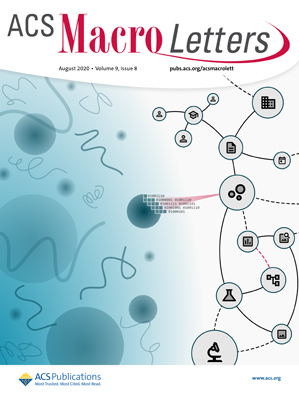生物来源的聚(柠檬碳酸酯)-奥利戈赖氨酸杂化大分子的可控合成。
IF 5.2
Q1 POLYMER SCIENCE
引用次数: 0
摘要
通过使用引入伯胺基团的硫醇-烯点击化学,实现了聚柠檬碳酸酯(PLC)的直接和逐步功能化。这些胺是 N-羧基酸酐(NCA)开环聚合(ROP)反应的起始点,使我们能够用低聚赖氨酸片段修饰聚柠檬碳酸酯(PLC)骨架,从而创造出聚合物刷型大分子。这些新制备的生物杂交结构具有明显的亲水性,这一点从它们的物理行为和接触角测量结果中可以看出。本文章由计算机程序翻译,如有差异,请以英文原文为准。
Controlled Synthesis of Bioderived Poly(limonene carbonate)-Oligolysine Hybrid Macromolecules.
A straightforward and stepwise functionalization of poly(limonene carbonate) (PLC) was achieved through the use of thiol-ene click chemistry introducing primary amine groups. These amines are initiating points for N-carboxy anhydride (NCA) ring-opening polymerization (ROP) reactions, allowing us to modify the PLC backbone with oligolysine fragments, thereby creating a polymer brush type macromolecule. These newly prepared biohybrid structures show a clear hydrophilic behavior as evident from their physical behavior and contact angle measurements.
求助全文
通过发布文献求助,成功后即可免费获取论文全文。
去求助
来源期刊
CiteScore
10.40
自引率
3.40%
发文量
209
审稿时长
1 months
期刊介绍:
ACS Macro Letters publishes research in all areas of contemporary soft matter science in which macromolecules play a key role, including nanotechnology, self-assembly, supramolecular chemistry, biomaterials, energy generation and storage, and renewable/sustainable materials. Submissions to ACS Macro Letters should justify clearly the rapid disclosure of the key elements of the study. The scope of the journal includes high-impact research of broad interest in all areas of polymer science and engineering, including cross-disciplinary research that interfaces with polymer science.
With the launch of ACS Macro Letters, all Communications that were formerly published in Macromolecules and Biomacromolecules will be published as Letters in ACS Macro Letters.

 求助内容:
求助内容: 应助结果提醒方式:
应助结果提醒方式:


